We have used a lot of DSLR lenses over the past few years, and have generally found that third party lenses (with the exception of the 50mm f/1.8 that both Canon and Nikon make) are the best way to go if you’re on a budget and first party lenses are best if you aren’t constrained by a budget or want the best quality money can buy. The third party lens reviews here apply equally for use on both Nikon and Canon bodies (as well as any other mount in which the lens is made), so don’t overlook these reviews just because you use Canon! They apply equally to Canon users.
You will notice most of the reviews here are in the 7-10/10 range, and might think we’re inflating scores. This is not the case. I only review lenses here that I have personally tried, and I read extensively about any lens before trying it in an effort to weed out the junk. Plus, remember that 7/10 is a 70%, which would be a C- by most accounts. Would your parents have been proud of you for earning a C-?! I don’t quite consider the lenses I’m giving 7/10 scores here ‘C-‘ lenses, but you get the idea…
If you would like advice on other lenses, please feel free to leave your question in the comments.
Crop Sensor Lens Reviews
In case you’re unfamiliar with the term, crop sensor DSLRs utilize a smaller image sensor than full frame or standard 35mm film cameras. All entry level DSLR cameras are crop sensor, as are most consumer level cameras. If you don’t know whether your DSLR is a crop sensor or full frame, there’s a 99% chance it’s crop sensor. Crop sensor cameras can also use full frame lenses, so really, any lens on this page is an option if you have a crop sensor camera.
Nikon 18-200mm f/3.5-5.6G AF-S VR II Lens – Often described as the “jack of all trades, master of none” this is really a great lens for a beginner looking for more range than the kit lens offers. Once you get more and more into photography, you’ll probably use this less and less, but it’s still a great option when traveling light. It’s not as sharp and it does have its flaws, but don’t let the gear-snobs fool you–you can get great shots with this lens. (Read Our Full Review w/ Photo Samples) Score: 7/10
Nikon 55-200mm f/4-5.6G AF-S VR Lens – If you purchased your entry-level camera with the “kit” lens (18-55mm), want more ‘zoom’, and only have a $200 budget, this is the lens for you. It’s not perfect, but it’s fairly sharp and gives you additional zoom for only around $175. Score: 7.5/10
Tamron AF 70-200mm f/2.8 Lens -At less than a third of the price of the Nikon version, the Tamron offers great bang-for-buck. It’s incredibly sharp and well-built. The only negative is that it does not have vibration reduction or any sort of image stabilization, which is very useful for a lens like this. If you’re shooting in broad daylight, you won’t miss it, though. Overall a great lens, and the added advantage of macro really pushes it over the top. Score: 8/10
Nikon 50mm f/1.8D AF Lens – Essentially the same lens as the 50mm f/1.8G reviewed above, this version of the lens is for those who have a camera body with an in-body focusing motor. Most entry-level cameras (Nikon D40, D60, D3000, D3100, D5000, D5100) do not have in camera focusing motors, so they will have to purchase the more expensive “G” version. Semi-pro and pro level Nikons (Nikon D80, D90, D7000, D300, D300s, D700, etc.) do have the focusing motor in body, so this is the lens to purchase for those cameras. Score: 8/10
Nikon 35mm f/1.8G AF-S Lens – Amazon presently lists this as its 2nd most popular DSLR lens. This is absolutely no shock to us, as it’s a great lens at an excellent prime focal length and it only costs $200. For general purposes, there are few faults with it. For Disney shooting, we recommend the slightly more expensive (well, double the cost, actually) Sigma 30mm, because it’s better for dark rides (the extra 5mm makes a huge difference on most rides as far as composition goes), is better-built, and has an aperture of f/1.4. However, if the Sigma 30mm isn’t in your budget, you can’t go wrong with this. Score: 9.5/10
Sigma 30mm f/1.4 Lens – The holy grail of portrait and dark ride lenses as far as we’re considered, the Sigma 30mm f/1.4 is the perfect focal length for photographing dark rides, and it’s a more natural portrait lens for using in the parks. It produces buttery-smooth bokeh and the images really pop. Plus, with an aperture of f/1.4, it’s a bit faster than f/1.8 lenses. While Nikon offers the 35mm f/1.8 for a bit less, do not be convinced that this is a better option! Spend a little more and get the exceptional quality of the Sigma. You will not regret it. Loses a point only because of quality control issues (don’t buy this used or from a store without a good return policy). (Read Our Full Review w/ Photo Samples) Score: 9/10
Tamron 17-50mm f/2.8 Lens – Essentially a replacement and upgrade for the kit lens that comes with most entry level DSLRs. It allows for more creativity, but also covers a very useful focal range, so it’s not a niche lens like an ultra-wide angle or a fisheye. It covers largely the same focal length (17-50mm v. 18-55mm) as a kit lens, but offers better image quality, better low-light performance, and allows for more shallow depth of field because of the constant f/2.8 aperture. (Read Our Full Review w/ Photo Samples) Score: 9.5/10
Sigma 18-35mm f/1.8 Lens – The world’s first constant aperture f/1.8 zoom lens. The f/1.8 aperture is not just a gimmick that Sigma managed to toss into a lens. I was shocked by how sharp and nice the bokeh looked, and at the lens’ overall construction and design. About the only sacrifice that Sigma made with this lens is its focal range, but even that is pretty suitable for a lot of uses. Highly recommended as a ‘first upgrade’ from the kit lens! (Read Our Full Review w/ Photo Samples) Score: 9.5/10
Sigma 17-70mm f/2.8-4 OS Lens – Another option for a kit lens replacement, this lens rivals the Tamron 17-50mm f/2.8 lens in terms of quality. Here, instead of a constant f/2.8 aperture for shallow depth of field, you have a variable aperture, a bit more zoom, and optical image stabilization. The optical and build quality is a significant step up over a kit lens with both this and the Tamron, so it’s only a question of whether the fixed f/2.8 aperture of that lens matters to you. (Read Our Full Review w/ Photo Samples) Score: 9/10
Nikon 12-24mm f/4 Lens – When I first got my Nikon D90, I purchased this lens and owned it for about a month. It was a great lens, but even then, I was a wide angle freak. I found myself always using the lens at 12mm, and quickly decided I wanted the Tokina 11-16mm after reading a few reviews. This lens is definitely a better option than the Tokina if you’d rather have more range, but the Tokina bests it in about every other regard. It’s also quite pricey. Score: 7/10
Nikon 10-24mm f/3.5-4.5G Lens – I have only had a couple chances to play with this lens, but it seems like a great successor to the earlier Nikon 12-24. It’s not quite as sharp as the 12-24, but it’s cheaper and has a wider range, which more than makes up for that, in my book. Definitely a great option for those wanting more range than the Sigma 8-16 or Tokina 11-16 offer. Score: 8/10
Tokina 11-16mm f/2.8 Lens – Some might call me an ultra-wide angle “fiend.” Well, this is the lens that started it all! The Tokina 11-16mm f/2.8 is another gem. With an aperture of f/2.8, it’s fast enough to use hand-held at night (or on some dark rides!) and its image quality is stunningly sharp. The only slight qualm is that it’s only 11mm at its widest. For most people this won’t be an issue, though. I just like really wide shots. If you do get this lens, make sure you use it to its full potential by leveraging the distortion it produces. Don’t just use it to “zoom backwards” or cram more things into the frame. (Read Our Full Review w/ Photo Samples) Score: 9.5/10
Sigma 8-16mm f/4.5-5.6 Lens – At 8mm, this lens is incredibly wide. Amazingly wide. Thanks to that, it can produce some really interesting shots that exaggerate distances and lines. Great for architectural shots. The only faults with the lens are that it’s slower (f/4.5-5.6) than most ultra-wides, it doesn’t accept filters, and its focus is a little slow. The fact that it’s 8mm on the wide end makes up for those faults, though. Score: 8/10
Rokinon 8mm f/3.5 Manual Focus, Fisheye Lens – This lens goes by many different names (Rokinon, Bower, Pro-Optic, Samyang, etc.), but if you find a lens that is an 8mm f/3.5 fisheye, it’s this one. This is really an amazing lens for it’s target audience. It’s really wide, reasonably fast, and incredibly cheap. It is manual focus, but manual focus is no problem at all on a fisheye lens. I sets mine to 3′ and typically never adjust it during the trip since at 3′, everything in the shot is in focus (there is some scientific explanation to this, but I don’t know what that is!). (Read Our Full Review w/ Photo Samples) Score: 10/10
Tokina 10-17mm f/3.5-4.5 Fisheye Lens – Fisheye lenses are a lot of fun, and this was my first. If you don’t want to buy a separate ultra-wide angle lens, this is a great option, as the closer you get to 17mm on the zoom, the more it’s like a regular ultra-wide. Reviewed solely as a fisheye, it’s not quite as appealing it’s not as wide as other fisheye lenses. It really only loses points because of its price, which is higher than the superior Rokinon 8mm. It’s a great lens if you really need zoom or autofocus. Score: 7.5/10
Full Frame Lens Reviews
Full frame lenses are designed for full frame DSLRs (the top of the line, most expensive cameras) and standard film cameras. While crop sensor lenses do not properly work on full frame cameras, full frame lenses DO work on crop sensor cameras. Here are our full frame sensor capsule lens reviews. We have full reviews for some of these lenses, so refer to the links in some capsule reviews to read more about a particular lens or see sample photos from it.
Sigma 50-500mm OS Lens – On full frame with this lens, you do have a zoom range that goes from normal field of view to extreme zoom (roughly 10x of zoom) with optical stabilization, but its bulky size makes it really difficult to use. Consider how much you’ll actually use 300-500mm before buying this over a more “normal” all-in-one zoom lens. (Read Our Full Review w/ Photo Samples) Score 7/10
Nikon 70-200mm f/2.8G VR II Lens – Before you read any further, this lens is around $2,500. Now that I’ve lost 99% of you, it’s worth $2,500. That said, I don’t have that kind of money to spend on photography equipment (this is a hobby for me, after all), so the only time I use this lens is when I borrow it from a relative. When I have it with me, it’s rarely in my bag. One of the few times I use a telephoto lens more than a wide angle. It’s such an awesome lens. While it’s a 10/10 in terms of quality, it loses a point due to cost. Score: 9/10
Sigma 105mm f/2.8 EX DG OS HSM macro lens – Sigma’s newest macro lens is compatible with full frame and crop sensor DSLRs and presents a great alternative to first party Canon and Nikon macro options. Macro lenses are very niche so it’s certainly not for everyone, but I think this focal length is perfect for macro work, and this lens is incredibly sharp and performs really well. Plus, that bokeh is just something else. I wouldn’t own this lens because it’s not for me, but for what it is, it’s nice. (Read Our Full Review w/ Photo Samples) Score: 8/10
Nikon 50mm f/1.8G AF-S Lens – The nifty fifty as it’s known among its fans, this lens is highly overrated for crop sensor photographers, but a great option for full frame shooters. While you can produce some great images with it, for Disney trips, it’s not that great of a lens on a crop sensor (DX) camera (if you don’t know what a crop sensor camera is–it’s most sub-$2,500 camera bodies). If you’re trying to take photos of dark rides or portraits, most of the time you’ll find that it’s simply too much “zoom.” For full frame shooters, it’s a great walk-around lens and the perfect focal length for dark rides. Plus, it’s a great value. Score: 9/10
Tamron 24-70mm f/2.8 VC Lens – This is the only 24-70mm f/2.8 lens to have image stabilization, which makes this lens is a pretty big deal. It’s also significantly cheaper than its Canon and Nikon OEM counterparts, thus almost begging the question: “is this lens too good to be true?” No, no it’s not too good to be true. The lens flat-out performs, going toe to toe with its counterparts and besting them overall. (Read Our Full Review w/ Photo Samples) Score 9.5/10
Sigma 35mm f/1.4 Lens – The first lens in Sigma’s reinvented “Art” line, this lens surpasses the first party 35mm lenses at about half the cost. This lens can do it all–from beautiful bokeh at f/1.4 plus a tack sharp in focus area, to great streetscapes and landscapes with front to back sharpness at higher apertures. This is the perfect walk-around prime lens for someone really wanting to let go with their creativity. By far the prime lens that I use the most. (Read Our Full Review w/ Photo Samples) Score 10/10
Sigma 15mm f/2.8 Fisheye Lens – For full frame Nikon shooters, this is the best quality fisheye option available. The Nikon counterpart is old and outdated, and while the Zenitar is a great budget lens, it’s not quite at the same level as the Sigma in terms of quality. The trade-off is that this lens is significantly more expensive. It’s a great lens, but most photographers looking to dabble in fisheye would be better served by the cheap Zenitar. (Read Our Full Review w/ Photo Samples) Score 9/10
Zenitar 16mm f/2.8 Fisheye Lens – This inexpensive fisheye lens is incredibly sharp and fun to use, and at less than $250, it’s significantly cheaper than other fisheye lenses. The only downside is that it’s not sharp wide open, but its image quality and sunburst quality when stopped down–plus that price–make it very appealing to full frame photographers who want a fisheye lens, but don’t want to spend $800. (Read Our Full Review w/ Photo Samples) Score 9/10
Nikon 14-24mm f/2.8 Lens – This lens is the reason I made the jump to full frame photography. It’s truly the holy grail for anyone who loves wide angle photography, but, unfortunately, it isn’t all that wide on a crop sensor body. There aren’t enough superlatives in the world for this lens. It’s tack sharp, fast, and is very versatile for a wide angle lens. Read our full review for all the juicy details! (Read Our Full Review w/ Photo Samples) Score: 10/10
We hope this lens guide helps you select your next lens!
If you are considering a purchase of any photography equipment, lenses, or anything else for that matter we would greatly appreciate it if you use the Amazon links in this post to make your purchase. It benefits the site, doesn’t cost you a dime, and helps us to keep providing you with useful content! Every penny helps!
Your Thoughts…
Do you have a favorite lens that isn’t listed here? Have thoughts on one that is listed here? Have any questions or need clarification? Hearing from you is half the fun, so please share your thoughts in the comments below!
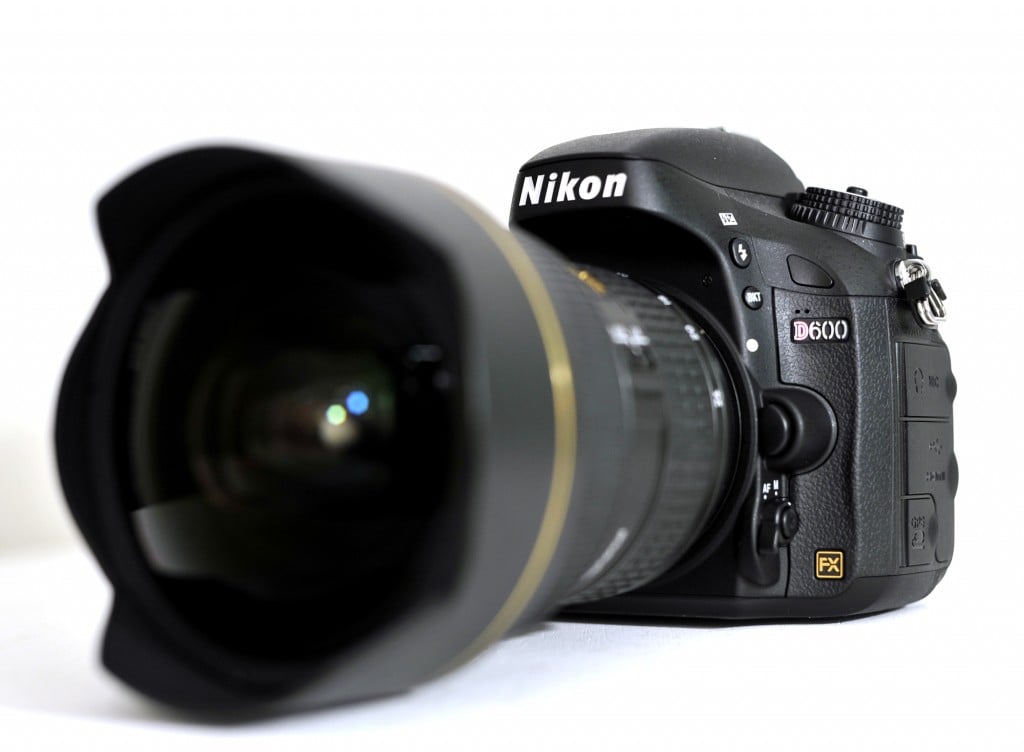
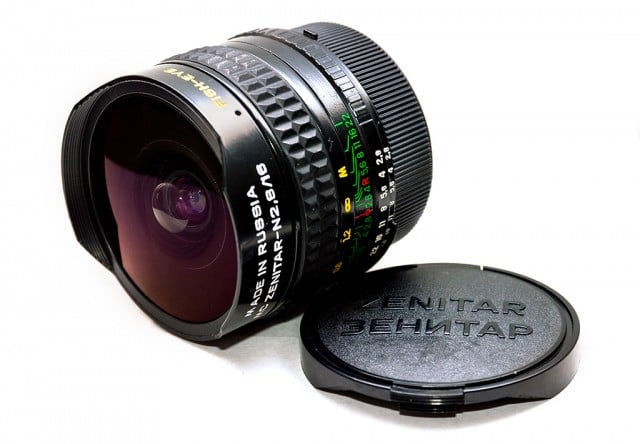
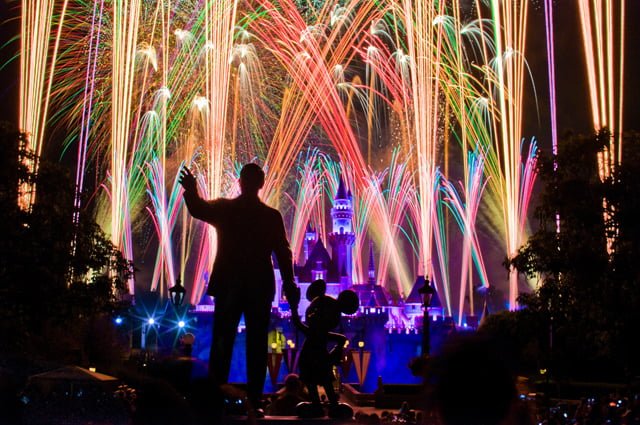
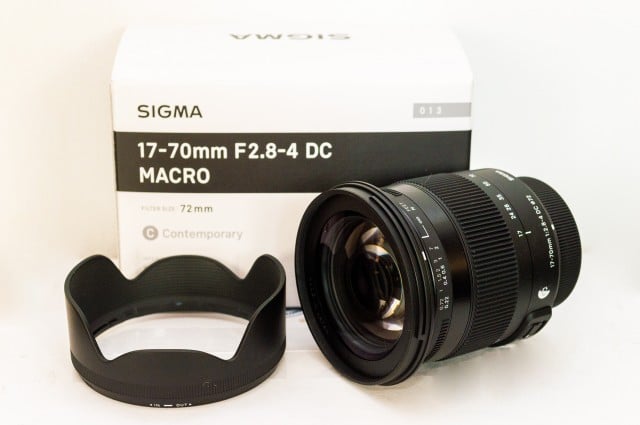
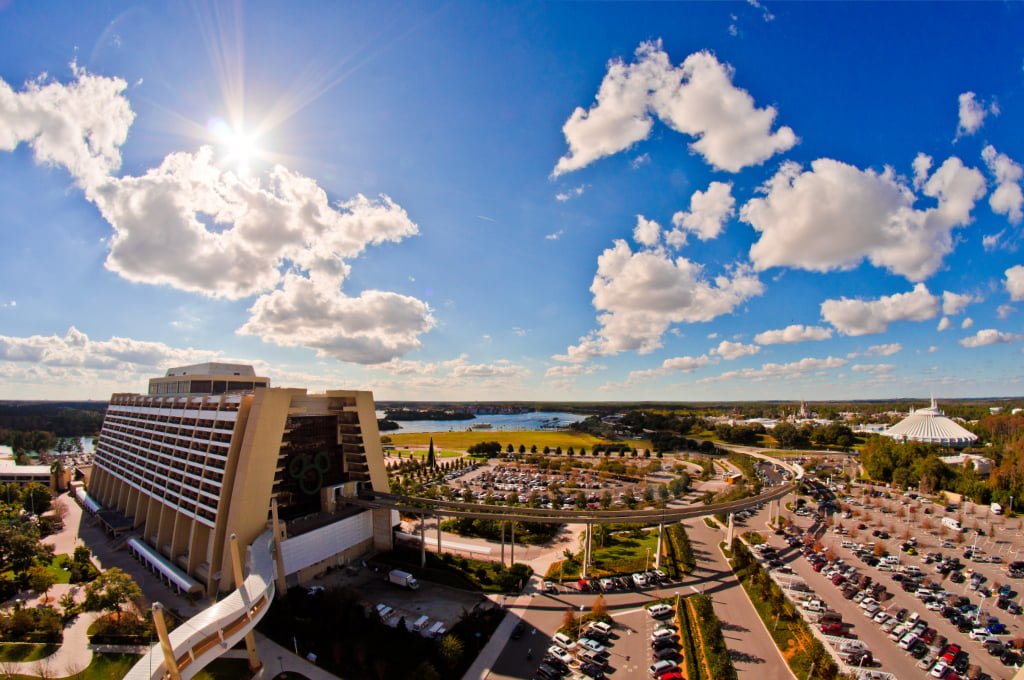
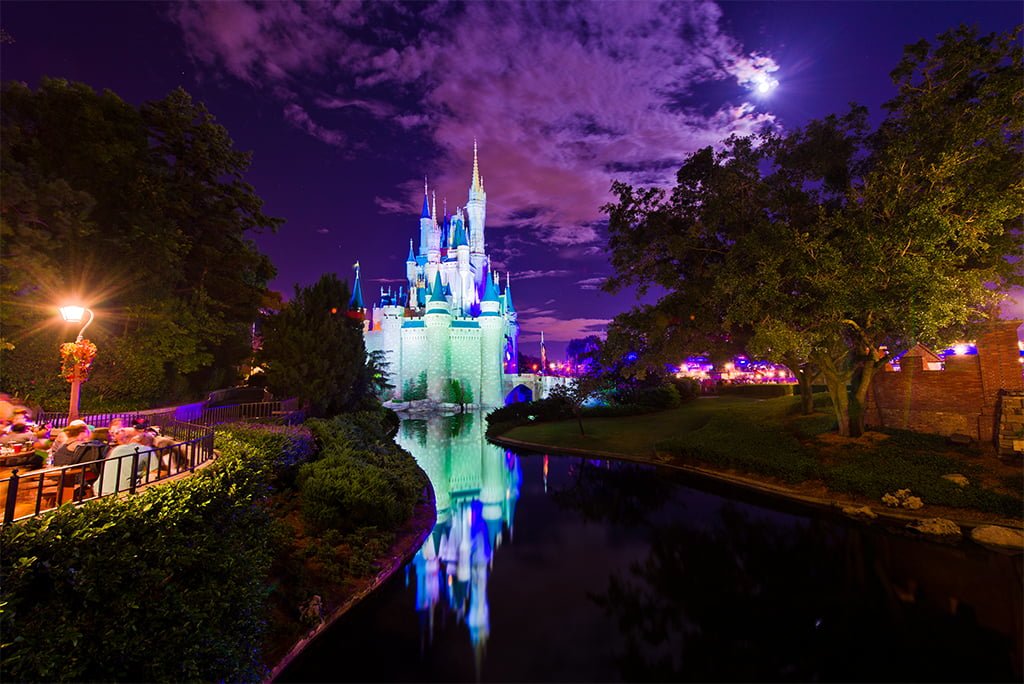
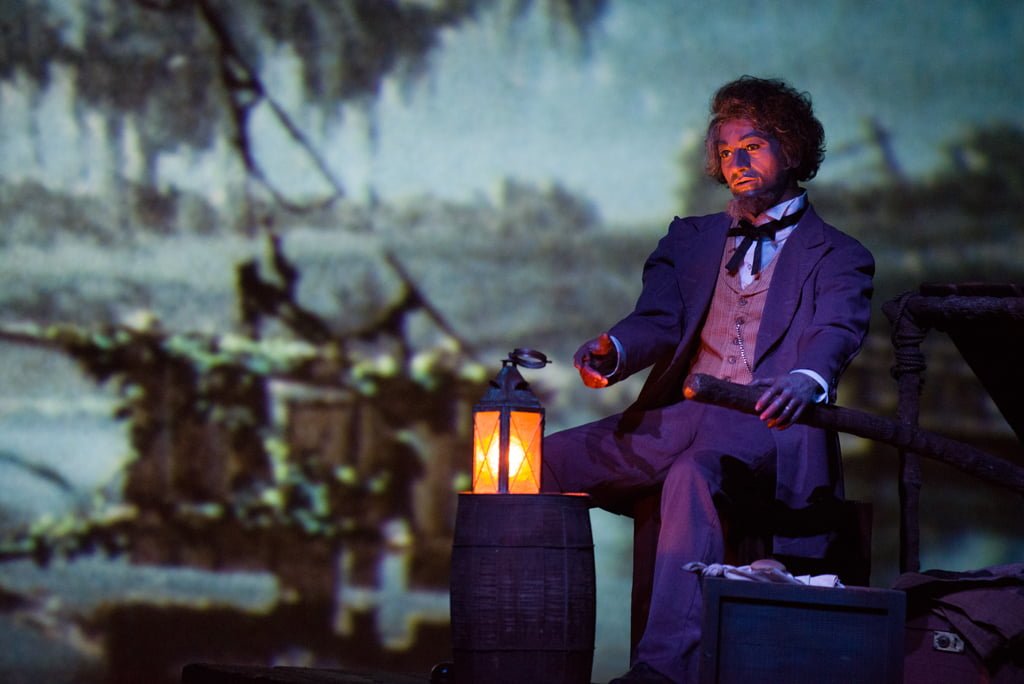
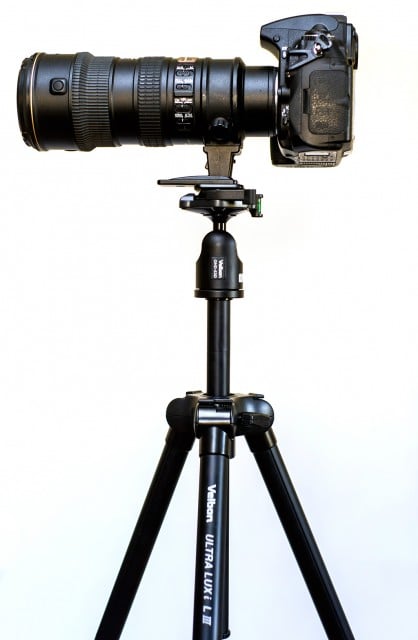
Hi Tom,
I was reading your 5 Indispensable Tips for Great Vacation Photos article. You mention the
Tamron 18-270mm VC lens for an all in one kinda scenario. I couldn’t find a full review of this lens. What’s your overall assessment of this lens? I would be pairing it to a Nikon d7200.
Love the tips !!
joe
I have a Nikon D3400, and I was looking at getting the Nikon 35mm f/1.8G AF-S Lens. From what I understand, a crop sensor camera adds roughly 1.5x zoom. Is that a correct understanding? Does that apply only to full frame on crop sensor?
I guess the question I’m trying to ask is will that still be too zoomed for the park?
two questions:
1) Inside the rides, are you autofocusing or manual focusing with the 30 1.4? I’m considering taking my 35 1.4 samyang (mf) or my nikon 50 1.8 (af) any suggestions?
2) When you were using crop sensor, the 30 1.4 was perfect focal length for rides. Now that you have full frame, are you still using the 30 or are you now wishing for or using a 50mm?
thanks! Great site. Wish it was my wife and I doing this!
1) Autofocus
2) I primarily use a 35mm on full frame, but a 50mm is good, too. The 50mm is slightly too tight for some scenes, while the 35mm is slightly too wide.
Thanks. I’m not sure if I can make a decision! Did you find your nikon actually changing focus quite a bit or do you think manually focusing could work? I have the “chip” in my samyang so it has focus confirm with the two arrows and the dot.
One other option I have is to use a dx 35 1.8G which, when wide open, has almost no vignetting. Its slower but has AF. i’m assuming you were shooting wide open on your sigma?
Lastly, when you shot the fireworks from across the lake, what focal length did you use? I can’t bring all my stuff along!!
What would you bring?
What’s the best telezoom lens for Nikon? I
I just purchased a tamron 18-200 and was told it had both vibration reduction and image stabilization. Your review says it has neither. Could this be a newer model? How would you rate it? Is it good for every day use?
It’s a newer lens. I haven’t tested it out, so I can’t speak to its quality. Good luck!
Hi Tom,
I’m wondering if you could offer your opinion on the Sigma 18-300mm lens as a walk around lens? The focal length just about covers it all! I have some of the more advanced “creative” lenses covered already (like the Tamron 24-70 2.8, Sigma 17-50 2.8, Sigma 70-200 2.8, the Rokinon 8mm, and the Canon 50mm 1.8) and I love them, but sometimes I don’t want to juggle switching lenses and want to travel light. I’m interested in an all in one that doesn’t compromise a lot on IQ.
Thanks
Jane